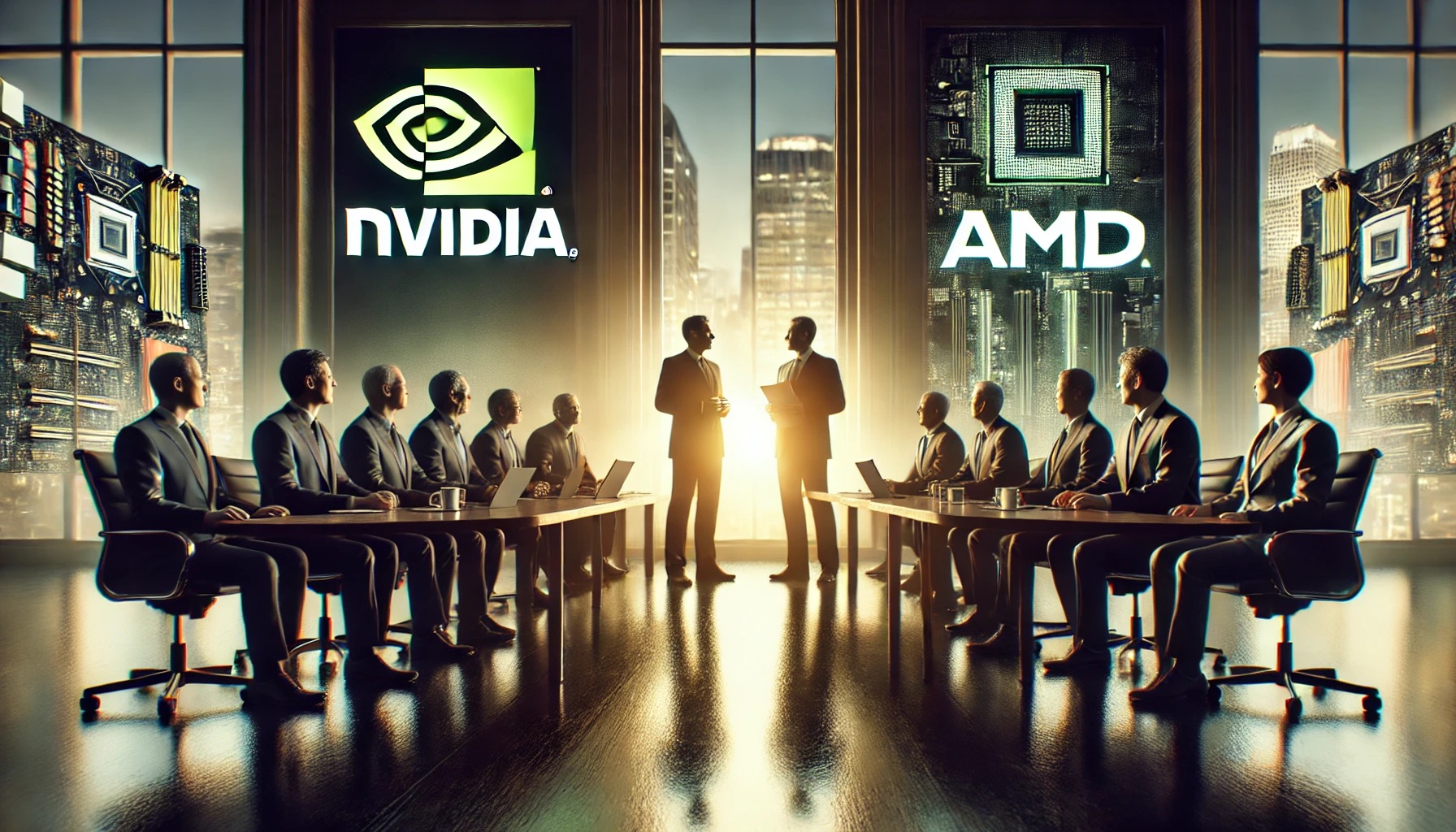A former AMD employee reveals that NVIDIA's CEO Jensen Huang considered selling NVIDIA to AMD, a pivotal moment that could have altered the competitive landscape.
Insights from AMD's Former Employee
Hemant Mohapatra, a former employee of AMD, claims that Intel had already dominated the industry by the time AMD introduced a "true" twin core processor in the 2000s. Intel persisted with its plan and marketing genius to capture customer interest by being the first to sell, while AMD attempted to catch up by releasing a four core processor.
In addition to aiming to join the GPU industry, WCCFTECH shares that AMD was shifting from dual-core to quad-core processors about the same time. After paying $5.4 billion to acquire graphics card manufacturer ATI in 2006, AMD rebranded the ATI devices as part of their Radeon graphics lineup.
AMD's Strategic Decisions and Outcomes
The engineering team at AMD was not happy with the acquisition of ATI, the ex-employee claims. The "internal joke" he mentioned was "AMD+ATI=DAMIT," and looking back, he thinks AMD should have gone with NVIDIA instead.
Although NVIDIA's CUDA software catered to a small subset of the market and the majority of developers preferred OpenGL, AMD "tried" to compete anyway.
During this time, AMD also attempted to purchase NVIDIA, as Mohapatra pointed out, praising NVIDIA founder and CEO Jensen Huang for his "very long term" thinking.
Hector Ruiz, an electrical engineer, succeeded Jerry Sanders as CEO of AMD in 2002 and remained in that role until 2008.
According to Huang, he "refused to sell unless he was made the joint-company’s CEO to align with this strategy" of "HW and SW lock-in" through the CUDA architecture and NVIDIA's processors.
AMD "blinked" in response to this request, and the engineer claims that "our future trajectories splintered forever" because of it.
Strategic Vision of Jensen Huang
Under his tenure at AMD, NVIDIA was never seen as being in the "same league" as ARM or Intel. Because of Huang's tendency to keep "going harder" despite obstacles, the engineer thinks, NVIDIA is in its current state.
When Mohapatra joined AMD with a stock price of $40, the company had just achieved its first major victory with the release of a 64-bit CPU that outperformed Intel in terms of design. But he said that AMD erred in pursuing a pure play twin core processor design.
When AMD introduced a "true" dual core processor, it was too late, says Mohapatra, because Intel had already dominated the market.



 TSMC Set to Post Record Q4 Profit as AI Chip Demand Accelerates
TSMC Set to Post Record Q4 Profit as AI Chip Demand Accelerates  Micron to Buy Powerchip Fab for $1.8 Billion, Shares Surge Nearly 10%
Micron to Buy Powerchip Fab for $1.8 Billion, Shares Surge Nearly 10%  Pop Mart Shares Surge in Hong Kong After First Buyback in Nearly Two Years
Pop Mart Shares Surge in Hong Kong After First Buyback in Nearly Two Years  U.S. Lawmakers Raise Alarm Over Trump Approval of Nvidia AI Chip Sales to China
U.S. Lawmakers Raise Alarm Over Trump Approval of Nvidia AI Chip Sales to China  White House Pressures PJM to Act as Data Center Energy Demand Threatens Grid Reliability
White House Pressures PJM to Act as Data Center Energy Demand Threatens Grid Reliability  Google Seeks Delay on Data-Sharing Order as It Appeals Landmark Antitrust Ruling
Google Seeks Delay on Data-Sharing Order as It Appeals Landmark Antitrust Ruling  Elon Musk Seeks $134 Billion in Lawsuit Against OpenAI and Microsoft Over Alleged Wrongful Gains
Elon Musk Seeks $134 Billion in Lawsuit Against OpenAI and Microsoft Over Alleged Wrongful Gains  China Halts Shipments of Nvidia H200 AI Chips, Forcing Suppliers to Pause Production
China Halts Shipments of Nvidia H200 AI Chips, Forcing Suppliers to Pause Production  BESI Reports Strong Q4-25 Orders Surge Driven by Data Center and Hybrid Bonding Demand
BESI Reports Strong Q4-25 Orders Surge Driven by Data Center and Hybrid Bonding Demand  Federal Judge Clears Way for Jury Trial in Elon Musk’s Fraud Lawsuit Against OpenAI and Microsoft
Federal Judge Clears Way for Jury Trial in Elon Musk’s Fraud Lawsuit Against OpenAI and Microsoft  Trump Pushes Tech Giants to Absorb AI Data Center Power Costs, Citing Microsoft Changes
Trump Pushes Tech Giants to Absorb AI Data Center Power Costs, Citing Microsoft Changes  Proposed Rio Tinto–Glencore Merger Faces China Regulatory Hurdles and Asset Sale Pressure
Proposed Rio Tinto–Glencore Merger Faces China Regulatory Hurdles and Asset Sale Pressure  SK Hynix to Invest $13 Billion in Advanced Chip Packaging Plant as AI Memory Demand Surges
SK Hynix to Invest $13 Billion in Advanced Chip Packaging Plant as AI Memory Demand Surges  Lululemon Founder Chip Wilson Escalates Proxy Fight to Remove Advent From Board
Lululemon Founder Chip Wilson Escalates Proxy Fight to Remove Advent From Board  U.S. Moves to Expand Chevron License and Control Venezuelan Oil Sales
U.S. Moves to Expand Chevron License and Control Venezuelan Oil Sales  South Korea Seeks Favorable U.S. Tariff Terms on Memory Chip Imports
South Korea Seeks Favorable U.S. Tariff Terms on Memory Chip Imports 





























